Costco sells two types of salmon, Atlantic and Sockeye, and while they appear similar they are actually worlds apart in terms of Sustainability, Nutrition and Flavor.
This article is going to make the case, with five reasons, that the best salmon to buy at Costco is the Frozen Sockeye.
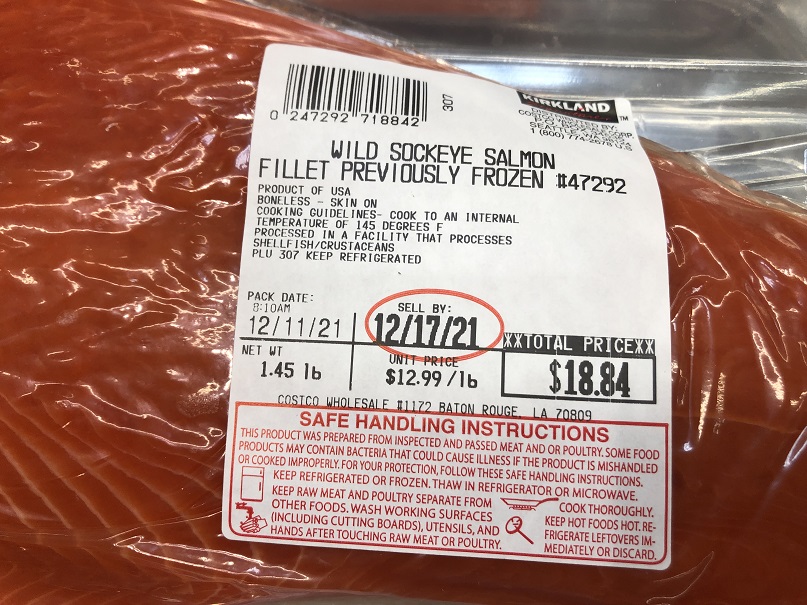
The best salmon to buy at Costco is the Wild Caught Sockeye Salmon.
I suggest buying either the three pound bag of individually frozen portions in the freezer section or the approximately one and a half pound thawed, previously frozen whole filet that Costco keeps in the cooler by the meat section.
Occasionally some Costco warehouses will feature fresh, not frozen, Wild Caught Sockeye Salmon but, as odd as this will sound, I recommend the frozen or previously frozen fish instead.
Your other choice for salmon is the Farm Raised Atlantic Salmon, available as Fresh Filets or Frozen portions. I do not recommend the Atlantic Salmon for the Five Reasons described in the rest of this article.
Farmed Raised vs Wild Caught
Costco has both Farm Raised and Wild Caught salmon.
The Atlantic Salmon, both fresh and frozen, is Farm Raised. The industrial farming of salmon is a complicated issue but, in general, the ocean based open net style farms used for mass production of salmon is considered non-sustainable and bad for the environment.
The Sockeye salmon is Wild Caught and is a much more environmentally friendly option.
This is the FIRST reason I suggest buying the Sockeye salmon instead of the Atlantic salmon.
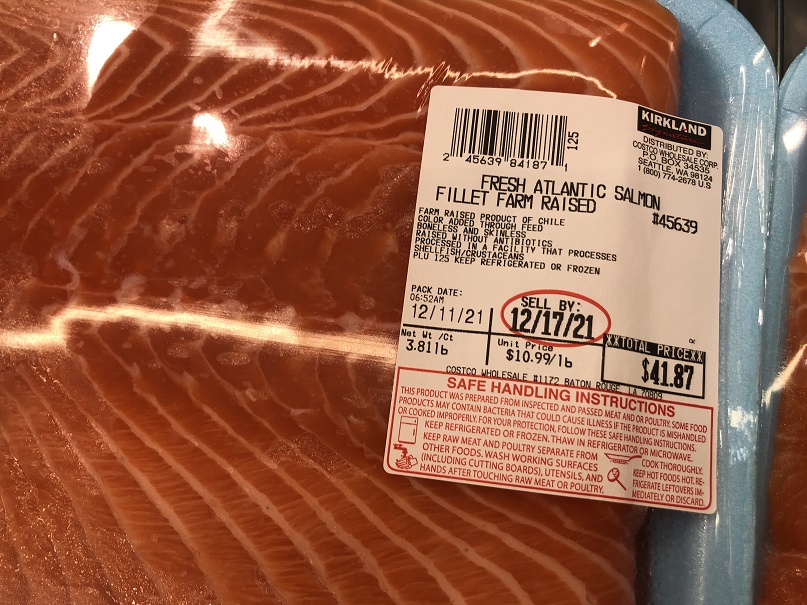
Origin
The Wild Caught Sockeye salmon is a product of the USA. At my Costco the sockeye is caught in Alaska but I have read that other stores get theirs from Washington state.
The Farm Raised Atlantic salmon is a product of either Chile or Norway.
For many years about 90% of Costco’s Atlantic salmon inventory was a product of Chile. However, the fish farms in Chile have an extremely bad reputation for being non sustainable and abusive in their use of antibiotics. Things have gotten so bad in Chile that Costco plans on shifting suppliers of Atlantic salmon.
Atlantic salmon are raised in Norway without antibiotics and Costco plans to shift to 60% of its Atlantic salmon imports to Norway while reducing Chilean imports to 40%.
This is the SECOND reason I suggest buying the Sockeye salmon instead of the Atlantic salmon.
Comparative Calories and Nutrition
There is a massive difference in the nutritional values of Sockeye and Atlantic salmon but it takes a little math to do a side by side comparison.
The frozen Atlantic salmon at Costco has an 7 ounce serving size with
- 400 Calories
- 28 g Fat
- 35 g Protein
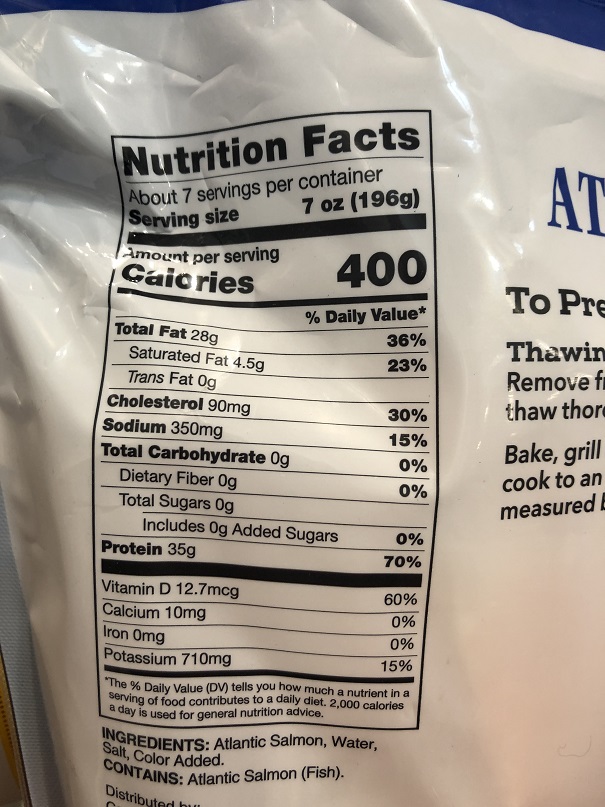
The frozen Sockeye salmon at Costco has a 6 ounce serving size with:
- 220 Calories
- 8 g Fat
- 37 g Protein
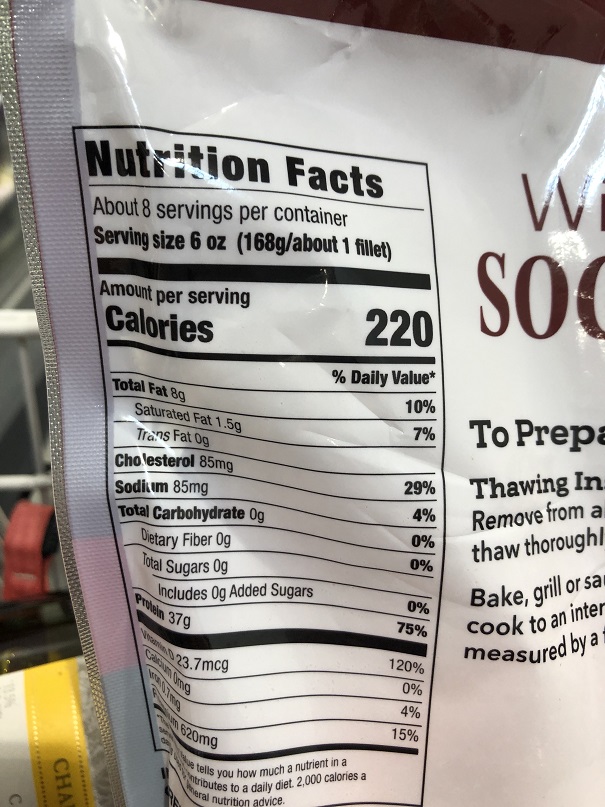
Since the serving sizes are different we need to break this down to a “per ounce” basis to get a real head to head comparison.
- Calories per Ounce: Atlantic = 57, Sockeye = 36
- Fat per Ounce: Atlantic = 4g, Sockeye = 1.3g
- Protein per Ounce: Atlantic = 5g, Sockeye = 6.1
This means that Sockeye salmon has fewer calories a heck of a lot less fat and more protein that Atlantic salmon.
This is the THIRD reason I suggest buying the Sockeye salmon instead of the Atlantic salmon.
Fresh Salmon Often Has Worms
There have been several highly publicized events, like this one from New York, where Costco customers have found live worms in their salmon.
It turns out that:
- This is not a “Costco Problem”.
- This is not a “Salmon Problem”.
- This is a “Fresh Fish Problem.”
Just about any type of fresh fish is at risk of being infested with worms and the fresh salmon at Costco is no exception.
The solution to the worm problem is to make sure the worms are killed by either:
- Making sure that the fish is thoroughly cooked to 145F.
- Freezing the fish to -4F for at least 7 days.
I always buy the frozen or the previously frozen and thawed fish at Costco.
This is the FOURTH reason I do not recommend the Fresh Atlantic Salmon at Costco.
Atlantic vs Sockeye Flavor Profiles
Atlantic salmon are farm fed in bulk with food pellets that have additives that make the meat on the fish turn “salmon red”. The industrial fed Atlantic salmon are not nearly as flavorful as wild caught Sockeye salmon that have spent their lives eating a natural and diverse diet.
In general, Atlantic salmon comes across as fatty but mild. The mildness of the fish makes it a great template for sauces and is one reason that Costco uses it for their ready to cook dinners like their Salmon Milano with Basil Pesto Butter.
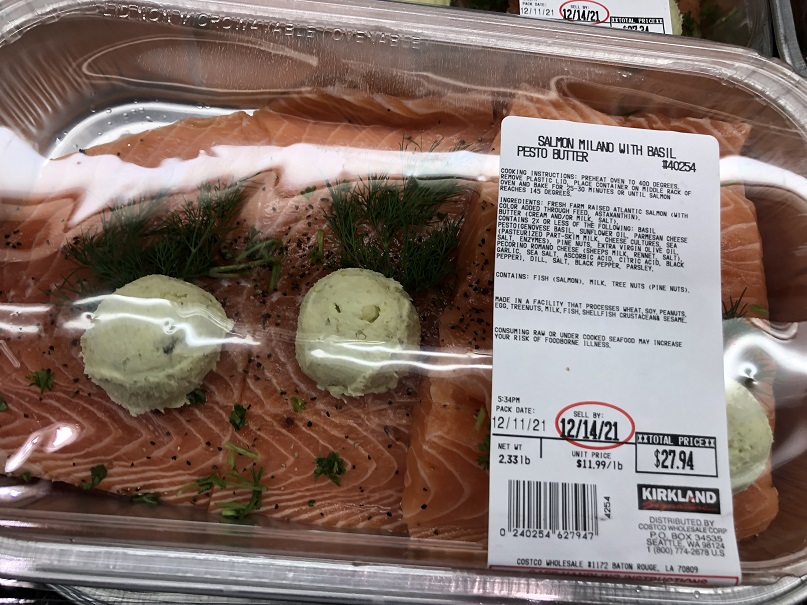
Sockeye salmon has more complex flavor than Atlantic while managing to be rich but not fatty. If you really want “Classic Salmon Flavor” then wild caught sockeye salmon is the fish for you.
This is the FIFTH reason I suggest buying the Sockeye salmon instead of the Atlantic salmon.
The sockeye salmon costs a little more than the Atlantic salmon but is superior in many ways and is worth the extra money.

Thank You, well done!!
Thank you for the kind words!
Great work! We buy Costco salmon often & appreciate all the information on the differences between theses two salmons.
Excellent breakdown! I’ll only buy wild salmon, and Costco’s frozen sockeye salmon is the best I’ve ever had. I also highly recommend it to everyone for a healthier, safer and much more delicious meal! Thanks for all of your great work.
There is a video on U TUBE called Farmed Norwegian Salmon Worlds Most Toxic Food. I stopped buying salmon after watching this video. The video is very informative, especially the last 15 minutes. We assume our food is healthy. After watching this video, I question and research all food products I buy.
It is not just the antibiotics, but the contents of the food pellets that they feed the fish. The levels of fat in the food pellets absorb the antibiotics and chemicals, and collect in the flesh of the fish. The men spraying the chemicals into the fish holds were wearing protective rubber gear and respirators. I have never tried the Wild Sockeye at Costco, because I am not a fan of the skin on the fish or a strong flavored fish. I am considering trying it now (at least once) to give it a chance. I encourage everyone to watch the video. It was an eye opener.
Farmed vs wild caught is an important distraction so buy wild caught. Never buy any farmed fish.
Adding: Never eat the skin of ANY fish. That is where most of the fat is. Fat will hold onto heavy metals such as mercury, known to inhabit the fat of many of the world’s fish. The larger the fish, the more mercury. When a fish eats another fish, the. Mercury has a cumulative effect. And it NEVER goes away. Not even from YOUR fat once you ingest fish skin. I wouldn’t touch fish fat or skin.
I never cared for salmon, but knowing it’s a very healthy food, and my son-in-law, who spent a year in Alaska fishing salmon, recommended Costco’s frozen Kirkland Wild Caught Sockeye Salmon, I tried it. Finally, a salmon I love. Pleasant taste and so easy to prepare – bake with a variety of healthy vegetables tossed in olive oil and spices – a perfect, healthy meal. And I love that it comes in individual vacuum packed filets just right for me.
Thank you for this very useful information. I have always preferred Costco’s frozen Sockeye to any other salmon, and now I know why!
You are very welcome! Thank you for visiting the site 🙂
Very helpful. Trader Joe’s also carries frozen wild Alaskan Sockeye salmon at a good price.
Bought some once from Trader Joe’s, thawed out, had a distinct bad fish smell. I rinsed it off several times, the smell was much less, cooked and ate it wondering the whole time if would get sick. Someone suggested the fish sat out too long before it was processed or frozen. Not a knock on TJ, suppose it could happen anywhere. Haven’t bought from there since.
Never had an issue with Costco.
All this information is so helpful. I’ve always been skeptical when the word “farm raised” is on the package. I appreciate the honesty in this article. I love salmon and also miss buying Tilapia. I will research information about this as well. I also signed up to be a Costco customer so thank you
I would never buy Farm Raised Fish. I only eat sockeye !! Love it!!!
Well guessI am oddball out…I do not like the taste of wild salmon…leaves a funny taste in my mouth…I have always preferred the farm raised and now after reading guess I need to pay more attention to where it is farmed…thank you
Great information – thank you.
Question: are the terms Sockeye salmon and Pacific salmon interchangeable?
Is Sockeye salmon always Pacific Salmon?
Thanks in advance for your reply
Jennifer, thanks for dropping by! The terms Sockeye salmon and Pacific salmon are not exactly interchangable as there are six other types of Pacific salmon including chinook, coho, steelhead, calico and cutthroat. I do believe that Sockeye salmon is always a type of Pacific salmon.
I was excited to try the wild caught salmon. The first filet I pulled out of the bag had a worm on it 🤮. After researching I decided to cook it to 145 (using my air fryer) to be safe. It was terrible. Dried out and kinda fishy tasting. I will try again with another cooking method. Do you know if Costco freezes their salmon to the required termperature/time to kill any parasites? Thx!